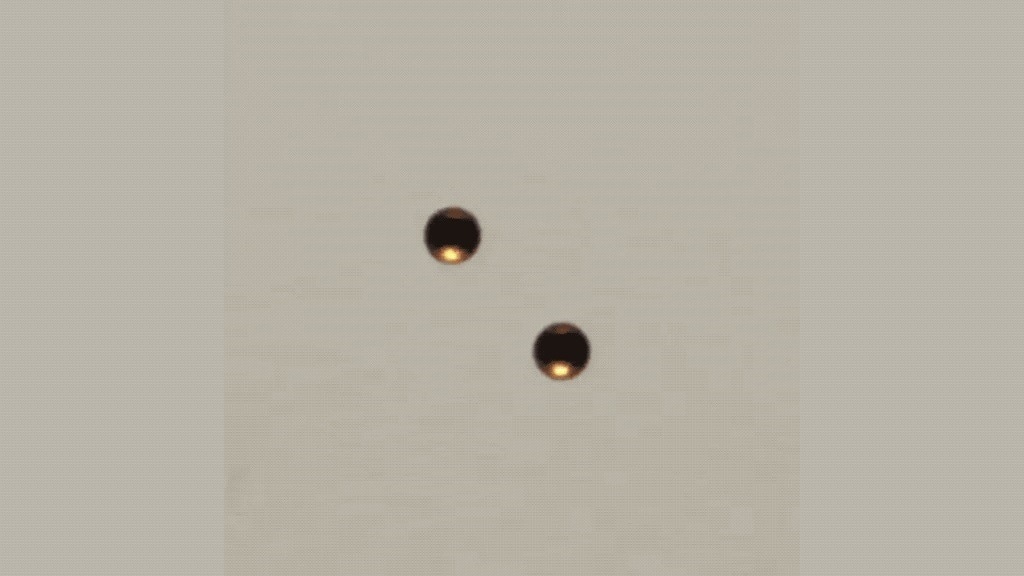Using controlled wandering between their metastable states, a research team led by the GRASP—Group of Research and Applications in Statistical Physics—(CESAM/Faculty of Science) of ULiège, in collaboration with the Université libre de Bruxelles and the Université Bourgogne Franche Comté, shows how to manipulate the mesh, shape, and symmetry of floating crystals.

Image Credit: Université De Liège
The research was published in the Scientific Reports journal.
Multi-particle systems are quite popular in various areas of physics. Interactions between them determine how they are organized. In particular, these systems have a propensity to self-assemble when favorable interactions are present, which reduces their energy.
Particles can form simple periodic structures (crystals), or more intricate ones such as protein chains, depending on how complex the interactions are.
Floating crystals can self-assemble at liquid surfaces due to the magnetocapillary interactions between the particles. Different states with various symmetric properties coexist for a fixed number of particles; these states are referred to as metastable states. Metastable states in floating crystals have been seen in several groundbreaking studies.
It is challenging to regulate the emergence of certain structures since different states coexist. However, preventing the emergence of metastable states is a vital component in functionalizing such assemblies, opening the door for objects like self-assembling microrobots. Research has never been carried out on controlling a floating crystal’s state.
Self-assembly has attracted the interest of academia and industry because of its use to fabricate tiny structures. Indeed, some structures are too large to be prepared by chemical synthesis and too small to be assembled by robotic methods. In particular, the micrometer-millimeter scale is usually the bottleneck between standard bottom-up and top-down manufacturing methods.
Nicolas Vandewalle, Professor, Physics, Université De Liège
Nicolas Vandewalle is the Director of GRASP.
Self-assembled systems frequently have multiple local minima in addition to the global minimum energy state because of the large number of degrees of freedom. The molecular level, in colloids, at the mesoscopic scale, and at the macroscopic scale are all places where these metastable states can be seen.
The use of these metastable states for active structuring has recently attracted more attention. Consequently, defining the prerequisites for hopping between the various metastable states is a critical issue that the researchers in this study tackled.
In the study we have just published we studied magnetocapillary self-assemblies composed of 3 to 19 particles. For a fixed number of particles composing the assembly, several different states coexist, distinguished by their shape, mesh size and symmetry.
Ylona Collard, Study First Author and Researcher, GRASP
To move between these various states in a regulated way, the researchers presented two various but complimentary experimental procedures. For a predetermined number of particles, the first permitted for a state change. Applying a horizontal magnetic field causes the assembly to deform, which is how this is accomplished.
The assembly will have a changed state after relaxing with a fixed probability. The second method selects the desired state for an assembly of N (number) + 1 beads from an assembly of N beads to manage the growth of an assembly.
The trajectory of the new bead delivered to the system is controlled by thermocapillary fluxes produced by an infrared laser that is applied to the water’s surface.
Vandewalle added, “Models have been proposed to study the frequency of occurrence of the different states of an assembly at its creation and to model the two experimental techniques. The simulations are in very good agreement with the experimental results. An analogy between these magnetocapillary assemblies, which can be reduced to a smaller size scale, and colloidal crystals has been proposed to broaden the perspectives of this work.”
This research is important for creating tiny structures like electronic circuits, microrobots, or new materials with new physical features.
Journal Reference
Collard, Y., et al. (2022) Controlled transitions between metastable states of 2D magnetocapillary crystals. Scientific Reports. doi:10.1038/s41598-022-20035-8.